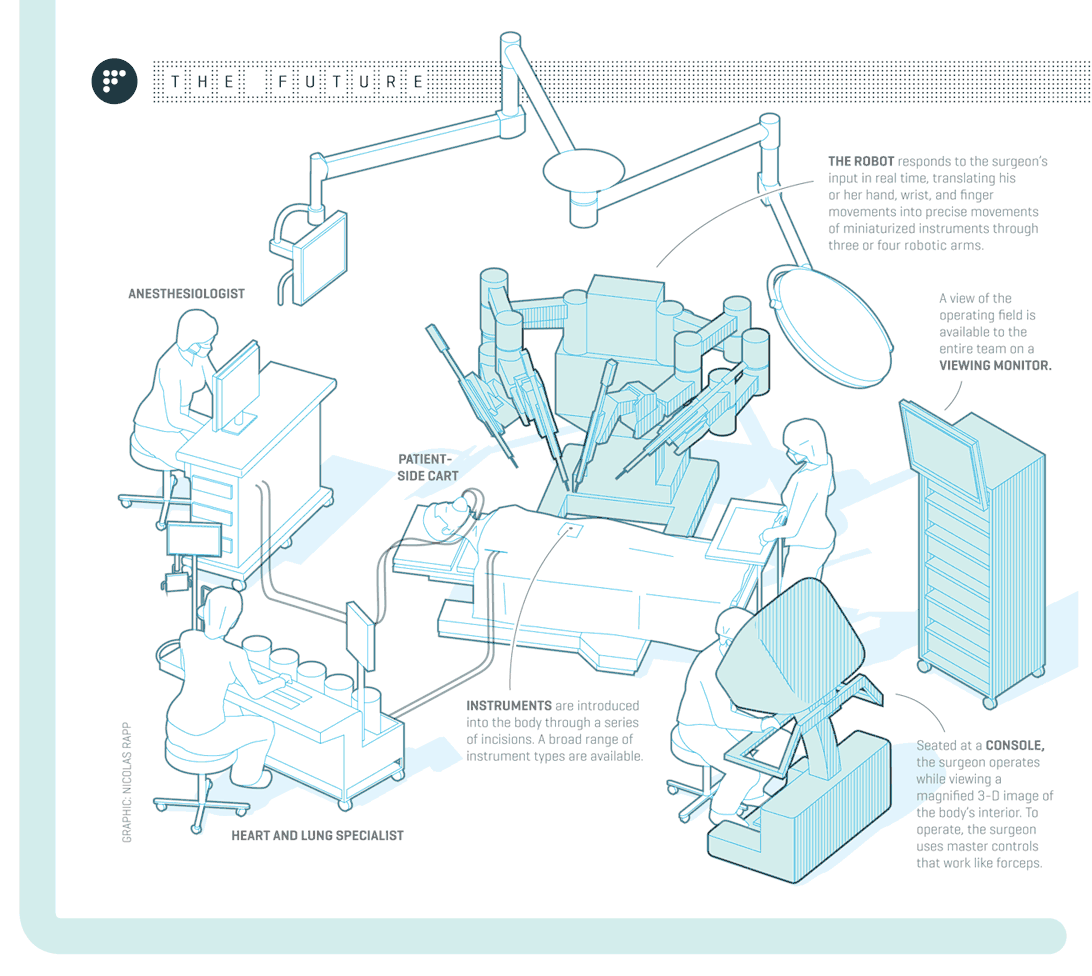Surgery Robots
Advances in surgery usually attempt to ameliorate surgery’s essential nature: cutting someone to cure him. The less severe the tissue damage, the faster the patient heals—less time in recovery, less money spent recovering from the wounds. In health care this is known as “lowering the downstream costs,” and it is what is driving hospitals to invest $2 million a pop for surgical machines. Surgeons—a particularly exacting bunch—have adopted robotics in droves. While physician buy-in is crucial, patients are also driving demand. Last year the Journal for Healthcare Quality reported that 41% of hospital websites advertised robotic surgery; of these, 37% did so on their homepage. Hospitals with robots are pulling in more and more patients, and in some cases, the existence of the robot actually increases the number of surgeries performed.
